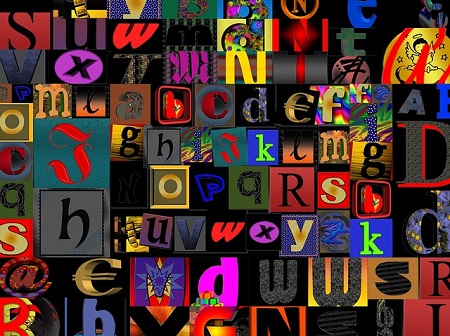Tag Archives: writing a novel
Standards be damned?
Write. Rewrite. When not writing or rewriting, read. I know of no shortcuts. — Larry L. King
When I first put pen to paper (or fingertips to keypad) and began filling the pages of my novel, the process was exhilarating. When I shared my initial draft with family and friends and they applauded my writing, I was encouraged. But as I said in my first post on this blog, I soon discovered there was more to this business of writing fiction than I had first imagined. It’s true; I could have believed the flattery I received was sufficient, patted myself on the back, and jumped on the self-publishing train so as to quickly launch my book and pin on a shiny badge of authorship, but I’ve never been inclined to proudly wear something I haven’t yet fully earned. I knew I had dues to pay before I could really call myself a novelist. A writer, yes, but still only aspiring to be the author of a debut novel I could be proud of. And so I’ve learned to write, and rewrite, and rewrite again.

And so, often, is the 3rd, and the 4th…. but it’s okay. Just keep at it!
Hemingway didn’t mince words. Indeed, I do agree, and let me add: Shit don’t shine! And, you know, it might even stink a bit when fresh, making it especially important to clean up any boo-boos and polish things up well.
There are no shortcuts to becoming a successful, published author. One must learn the craft of writing, and then practice, practice, practice.
I take the craft of writing seriously, with pleasure, and with no small measure of patience. I think most writers feel the same—or at least they say they do—and I have no doubt they mean it, but I have noticed that in the sometimes heady rush to be a published author, patience—even the patience necessary to first learn the basic mechanics of writing, let alone refine the art of good storytelling—is often lacking.
Secure writers don’t sell first drafts. They patiently rewrite until the script is as director-ready, as actor-ready as possible. Unfinished work invites tampering, while polished, mature work seals its integrity.
― Robert McKee, Story
The truth is, in this digital age, anyone can publish a novel, even if the language is jibberish. Being able to write is no longer requisite to publishing, nor will filling pages with content that is pure nonsense stop a literary imposter from producing a book. For better or for worse, in the world of self-publishing, the traditional gatekeepers—professional agents, editors, and publishing houses—can go home, and the relative pros and cons of their doing so depend on your perspective.
Continue reading
Fiction, not an autobiography
 Some people have asked me if my novel is really a memoir. No, The Woman Inside Her isn’t the true story of a part of my life nor is it a full autobiography. It is fiction. But I won’t deny that, like most if not all novelists, I’ve drawn from my own experiences, particularly earlier in life and certainly including the times and places I was living in, to help me create my characters and conceptualize the plot. Of course I have! That’s the fodder that feeds a writer’s creative muse! But then I’ve mixed it all up with other sources of information, other approaches to the story. I’ve mined psychological case studies and poured through the professional literature related to my characters’ issues, read “pop” psychology books, and even other novels to gather research data and prompt inspiration. And then there are, of course, all the people I have known over the years, closely or in passing, at home, work and at play, as well as the familiar characters of stage and screen.
Some people have asked me if my novel is really a memoir. No, The Woman Inside Her isn’t the true story of a part of my life nor is it a full autobiography. It is fiction. But I won’t deny that, like most if not all novelists, I’ve drawn from my own experiences, particularly earlier in life and certainly including the times and places I was living in, to help me create my characters and conceptualize the plot. Of course I have! That’s the fodder that feeds a writer’s creative muse! But then I’ve mixed it all up with other sources of information, other approaches to the story. I’ve mined psychological case studies and poured through the professional literature related to my characters’ issues, read “pop” psychology books, and even other novels to gather research data and prompt inspiration. And then there are, of course, all the people I have known over the years, closely or in passing, at home, work and at play, as well as the familiar characters of stage and screen.
I don’t think writers ought ever to sit down and think they must write about some cause, or theme, or something. If they write about their own experience, something true is going to emerge.
― Doris Lessing
There is nothing I enjoy more than people! So in the end, my characters are composites of all my sources of information about people, and my story is my imagination’s way of weaving it all together. You know, I think the best part of writing a novel is that moment when I wake up in the middle of the night, click on the light beside my bed, grab a pen and my notebook and start scribbling a line of dialogue, a scene, a character’s quirks. “Ah-ha! I’ll have the character do ………!” It’s just so darned much fun to make up the stuff! Where else can you do that every day, all day, without being considered diagnosable? It’s fiction, and it’s really fun!
What is meant by mainstream fiction?
 In several recent posts I described the essential characteristics which differentiate popular or commercial “genre” fiction and “literary” fiction. Floating somewhat porously between these two types of fiction is another over-arching category called “mainstream” or “general” fiction, sometimes also referred to as “literary light.” Combining elements of both genre and literary fiction, these novels have the potential to attract broad audiences. The best are exceptionally good stories of substance that are written really well.
In several recent posts I described the essential characteristics which differentiate popular or commercial “genre” fiction and “literary” fiction. Floating somewhat porously between these two types of fiction is another over-arching category called “mainstream” or “general” fiction, sometimes also referred to as “literary light.” Combining elements of both genre and literary fiction, these novels have the potential to attract broad audiences. The best are exceptionally good stories of substance that are written really well.
In writing mainstream fiction, some but not all genre conventions and rules can be broken. Like commercial genre books, these novels must have a strong “hook” to draw readers in, but in addition to a compelling plot, well-developed characterization is important. What characters say and do isn’t enough; readers of mainstream fiction also want to know something about what motivates the characters’ behavior. Continue reading
What is literary fiction?
 In previous posts I discussed what is meant by the literary classification described as “popular genre” fiction as well as provided a descriptive list of genre and sub-genre types. There are two other over-arching labels applied to literature: “literary” fiction, the subject of this post, and “mainstream” fiction, also known as “general” or “literary light.”
In previous posts I discussed what is meant by the literary classification described as “popular genre” fiction as well as provided a descriptive list of genre and sub-genre types. There are two other over-arching labels applied to literature: “literary” fiction, the subject of this post, and “mainstream” fiction, also known as “general” or “literary light.”
So just what is “literary” fiction? Many refer to literary novels and short stories as “serious” fiction. Everything about literary novels seems a little larger or a step up: big ideas and underlying themes that transcend plot; complex, in-depth characterization; prose that is both technically excellent and beautiful; writing that may reflect innovative craftsmanship and experimentation; longer length; and premium printing and presentation quality. Unlike the writers of genre novels, literary fiction writers are not required to follow particular conventions or rules, but their works must reflect such common characteristics and high standards. Continue reading
A list of fiction categories, genres and sub-genres
A novel is a novel is a novel . . . Think so? In my previous post I defined “genre fiction” and began to differentiate between “popular” or “commercial” genre novels and those classified as “mainstream” or “literary” fiction (the subject of my next post). I also discussed the usefulness of such a system of classification. Believe it or not, more than one hundred fiction categories have been identified. Even this list isn’t all-inclusive. Take a look at the long list below and see what you think. Continue reading
What is genre fiction?
 We’ve all seen the covers. They beckon, they tease, and excite. And they are easily recognizable, prompting recollection and motivating interest. By repeatedly displaying subtle variations of highly evocative imagery–knives dripping blood or lawyers in court, lovers in passionate embrace or men with glistening muscular physiques gripping machine guns, quaint cottages and country scenes or couples walking hand-in-hand, as well as specific author’s branding through repetitive formatting and fonts–the covers of “genre” novels signal familiarity and broadcast that readers’ expectations will be satisfied. Their titles, too, speak boldy and unambiguously of the novels’ plots and characters, leaving little doubt in potential readers’ minds about what the books are about.
We’ve all seen the covers. They beckon, they tease, and excite. And they are easily recognizable, prompting recollection and motivating interest. By repeatedly displaying subtle variations of highly evocative imagery–knives dripping blood or lawyers in court, lovers in passionate embrace or men with glistening muscular physiques gripping machine guns, quaint cottages and country scenes or couples walking hand-in-hand, as well as specific author’s branding through repetitive formatting and fonts–the covers of “genre” novels signal familiarity and broadcast that readers’ expectations will be satisfied. Their titles, too, speak boldy and unambiguously of the novels’ plots and characters, leaving little doubt in potential readers’ minds about what the books are about.
Genre fiction, also labeled “popular” or “commercial,” has strong mass-market appeal that is centered in a variety of common themes that match readership followings. These are the books up front and face-forward on big, commercial bookstores’ shelves, the “pocket” paperbacks in airport book racks, the books featured for casual and genre browsers on amazon.com and powells.com, wherever the high demand for them is met. They are easy reads and the best are always entertaining page-turners.
If you are a writer, you probably know these novels are easier to write than “literary” fiction, and in many instances are turned out in multiples per year. Popular genre fiction tends to be formulaic: the length not too long and the prose not too wordy or poetic; the plot primary, straightforward, action-driven and fast-paced; and the characterization subordinate to the plot, which unfolds through what the characters do and say. The writing is clear and accessible and the story conventions followed tend to be specific to each genre category or sub-genre. In commercial fiction, these categories most commonly include romance, mystery, thriller, action-adventure, horror, gothic, historical, western, and writing for juveniles or young adults, but there are many more sub-categories–more than one hundred in all! (My next post includes a long list of genres and sub-genres.) If this degree of categorization isn’t confusing enough, many of these genres play mix-and-match, sometimes crossing the once inviolable boundaries between popular genre, “mainstream” and “literary” fiction (described in depth in an upcoming post), and there is often disagreement about the assignment of the representative labels or whether or not some sub-genres should exist at all.
This leads me to my next topics: “mainstream” and “literary” fiction.
Writing The Woman Inside Her
 I’ll be honest. When I embarked on my novel-writing project—working title, The Woman Inside Her—I thought it would be a cinch. I knew the story I wanted to tell; I had good writing skills; and I certainly had the desire—no, the passion―to drive the story forward. Little did I know, there is a lot more to good storytelling than knowing the basics of authorship or even an inspired plot. A novelist―or any storyteller, fiction or non-fiction―must first work at cooking that plot so that future readers will taste one tempting morsel at a time, each one succulent, savory and just satisfying enough to leave him or her wanting more. Then, even when the recipe is clear and complete, the writer has to perfect its execution. Ah, yes, a noble task, and one that seems manageable until one’s muse is battered by concepts previously unheard of: protagonists and antagonists, conflict, points of view, tension arcs, flow, denouement, and so on, and on, and on. Enter, the learning process–and to think I thought once I’d conceptualized a good story and developed some interesting characters I’d have nothing more to do than check my grammar, syntax, and punctuation!
I’ll be honest. When I embarked on my novel-writing project—working title, The Woman Inside Her—I thought it would be a cinch. I knew the story I wanted to tell; I had good writing skills; and I certainly had the desire—no, the passion―to drive the story forward. Little did I know, there is a lot more to good storytelling than knowing the basics of authorship or even an inspired plot. A novelist―or any storyteller, fiction or non-fiction―must first work at cooking that plot so that future readers will taste one tempting morsel at a time, each one succulent, savory and just satisfying enough to leave him or her wanting more. Then, even when the recipe is clear and complete, the writer has to perfect its execution. Ah, yes, a noble task, and one that seems manageable until one’s muse is battered by concepts previously unheard of: protagonists and antagonists, conflict, points of view, tension arcs, flow, denouement, and so on, and on, and on. Enter, the learning process–and to think I thought once I’d conceptualized a good story and developed some interesting characters I’d have nothing more to do than check my grammar, syntax, and punctuation!
“Write every day, line by line, page by page, hour by hour. Do this despite fear. For above all else, beyond imagination and skill, what the world asks of you is courage, courage to risk rejection, ridicule and failure. As you follow the quest for stories told with meaning and beauty, study thoughtfully but write boldly. Then, like the hero of the fable, your dance will dazzle the world.”
–Robert McKee, Story
Well, I’m now working on a later draft of The Woman Inside Her, and I’m sure it will need revision and polishing, too. At least I know I’m in good company, among the best, in fact; while there are plenty of good, fun-to-read novels created in months, not years–especially “genre” thrillers, mysteries, romance and other “formula” fiction–there are also writers working on “mainstream” and “literary” fiction projects which often take several or more years, sometimes many years, to complete. Sighhhhh. I feel better.
If you’re wondering what these fiction labels mean, check out my posts on genre, mainstream, and literary fiction–distinctions that aren’t always clear, and, I think, are sometimes taken too seriously. After all, what’s important to you as a reader? A good read! Personally, I thoroughly enjoy being entertained by a fast-paced mystery or a sexy romance, just as I love being enthralled by a psychological thriller, moved by a heart-wrenching tragedy or subtly transformed by a nuanced yet profound tale of ordinary people. And undeniably, there’s nothing like the magic of beautifully written prose to tantalize my literary taste buds! And you? What kind of novels do you like to read? I’d love to hear who your favorite authors are.







